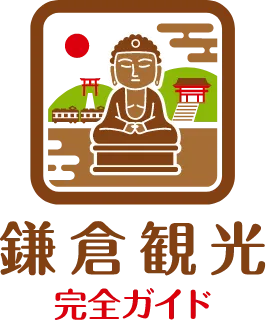Tsurugaoka Hachimangu Shrine (鶴岡八幡宮)
What Is Tsurugaoka Hachimangu Shrine (鶴岡八幡宮)?
Standing at the heart of Kamakura, Tsurugaoka Hachimangu Shrine dates back to the late 11th century, when Minamoto no Yoriyoshi enshrined a spirit from Iwashimizu Hachimangu Shrine in Kyoto to Yuigahama. Later, Minamoto no Yoritomo—founder of the Kamakura shogunate—relocated it to its current site, making it the spiritual and urban centerpiece of the city. The shrine has long symbolized samurai authority, blending faith with politics.
Highlights: Scenery, Architecture, and Nature
Climb the iconic grand staircase to reach the majestic main hall. The Genji and Heike ponds on either side contain symbolic islands representing the rise and fall of clans. Don’t miss the “hato” (dove) motif embedded in the kanji “八” on the gate, a nod to the sacred messengers of Hachiman deity.
Spiritual Significance and Divine Blessings
The enshrined deities—Emperor Ojin, Empress Jingu, and Himegami—are believed to bestow blessings for success, family harmony, and career growth. Couples especially revere the shrine, inspired by the union of Yoritomo and Masako Hojo. Sub-shrines also offer unique blessings: the Shirahata Shrine for academic success, the Masako Stone at Hataage Benzaiten Shrine for fertility and harmony, and the Maruyama Inari Shrine for prosperity in business.
Local Traditions, Experiences, and Seasonal Events
In September, the grand Yabusame ritual revives samurai spirit with horseback archery. During summer, the Bonbori Lantern Festival casts a soft, dreamlike glow across the shrine grounds.
Fortune Slips, Stamps, and Local Rituals
The shrine’s omikuji are famously “strict,” with a high chance of drawing a bad fortune. Don’t worry—you can leave it in a special box to turn luck around. Goshuin (temple and shrine stamps) are available at each sub-shrine, making for a rewarding stamp trail.
Access and Opening Hours
Just a 10-minute walk from Kamakura Station or a short stroll from nearby bus stops. The shrine opens from 6 a.m., perfect for those seeking quiet early morning visits before the crowds arrive.
Best Time to Visit
Early mornings and late afternoons offer serene moments, free from crowds. In spring, cherry blossoms adorn the approach; in summer, lanterns glow; autumn brings vivid foliage; and winter offers crisp, tranquil air.
Nearby Spots Within Walking Distance
Explore nearby landmarks like the Kamakura Museum of National Treasures, Hokoku-ji Temple (報国寺), and Kencho-ji Temple (建長寺). Kamakura’s Komachi Street is ideal for local snacks, traditional sweets, and cozy cafés.
Recommended For
Perfect for those drawn to history, spiritual exploration, or quiet moments. With a kitchen-equipped, no-meal stay at Tosh’s Place (トシズプレイス), you can fully savor peaceful mornings and evening shrine visits—experiencing Kamakura like a local.
Wrap-Up: The Allure of History and Sacred Silence
Tsurugaoka Hachimangu Shrine preserves the deep link between samurai history and Shinto belief. The fact that Kamakura was designed around this shrine speaks volumes of its importance. Embrace its quiet majesty, feel history echo around you, and enjoy a tranquil moment. The early morning or evening visits—only possible when staying nearby—offer a truly unique experience.
